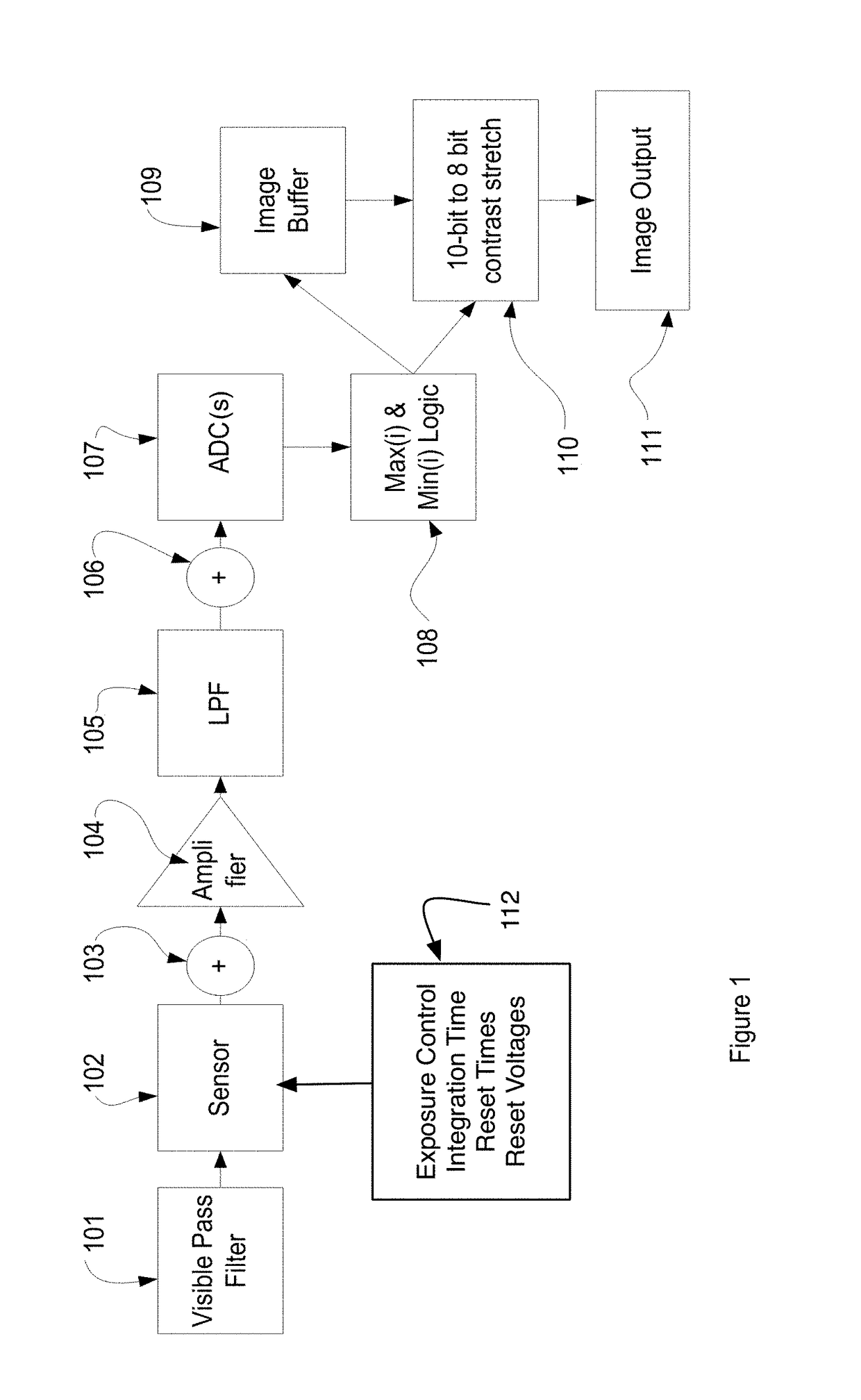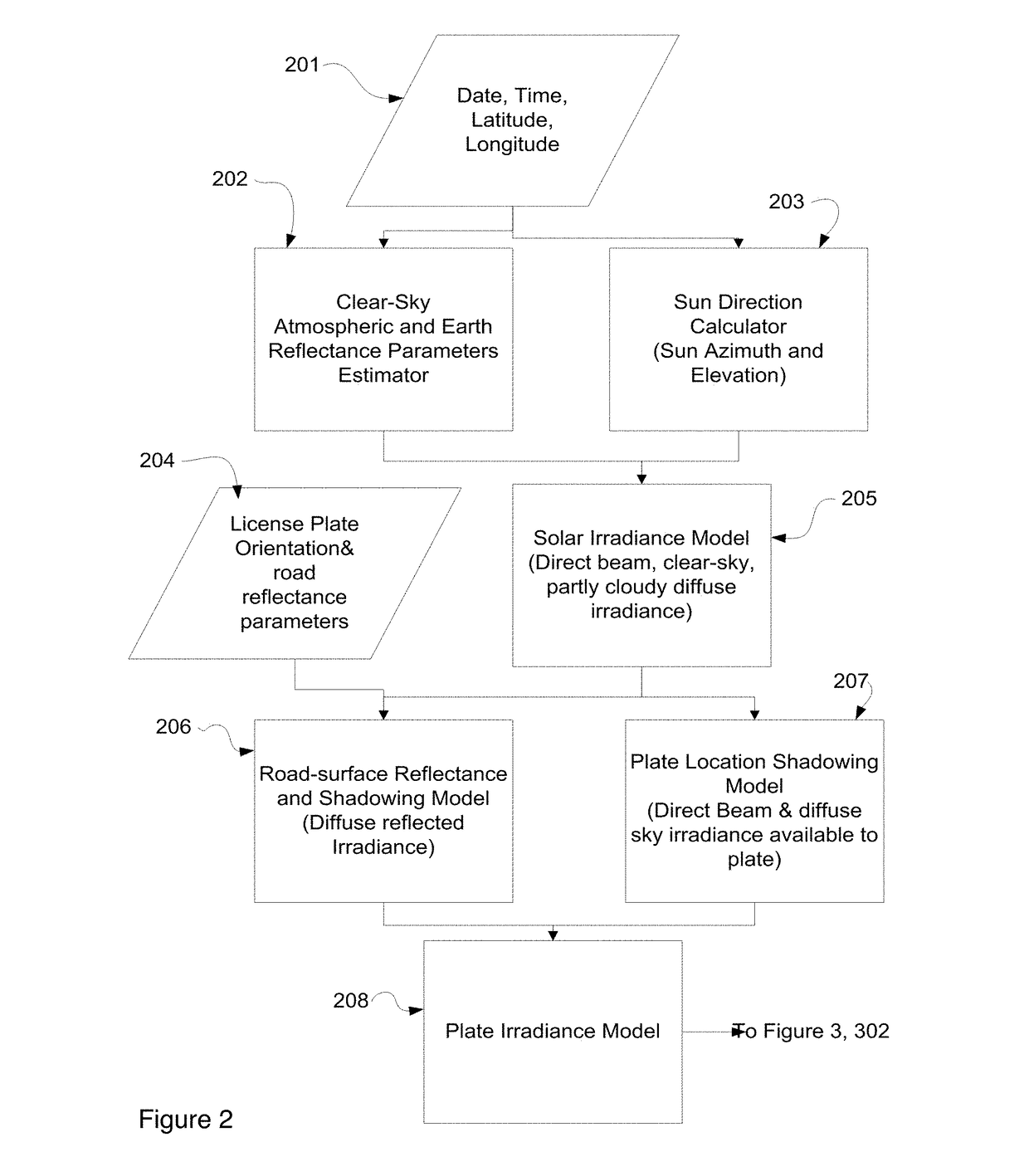Digital camera control system
a control system and digital camera technology, applied in the field of control systems, can solve the problems of insufficient video image contrast to support character recognition, fixed exposure settings will not provide the image quality, brightness and contrast required, and may not be best for first adjustments
- Summary
- Abstract
- Description
- Claims
- Application Information
AI Technical Summary
Benefits of technology
Problems solved by technology
Method used
Image
Examples
Embodiment Construction
[0042]The present invention is a set of models and algorithms for estimating irradiance of an object to be imaged as a function of environmental factors, the resulting radiance of the object and irradiance upon an imaging sensor and control algorithms for the sensor based upon the environmental factors and particular imaging requirements. In the exemplary case the requirements are contrast sufficient to recognize characters upon a vehicle license plate tag. The license plate features of interest are the background of the licenses plate, white being the brightest possible plate background, the numeric characters of the plate typically larger and black and the state or country designation lettering. The imaging requirements are to have sufficient contrast between the license plate background and the numeric character and the state designation characters.
[0043]FIG. 1 depicts a camera typical of which the invention may be practiced. The camera consists of a near UV through near IR wavel...
PUM
 Login to View More
Login to View More Abstract
Description
Claims
Application Information
 Login to View More
Login to View More - R&D
- Intellectual Property
- Life Sciences
- Materials
- Tech Scout
- Unparalleled Data Quality
- Higher Quality Content
- 60% Fewer Hallucinations
Browse by: Latest US Patents, China's latest patents, Technical Efficacy Thesaurus, Application Domain, Technology Topic, Popular Technical Reports.
© 2025 PatSnap. All rights reserved.Legal|Privacy policy|Modern Slavery Act Transparency Statement|Sitemap|About US| Contact US: help@patsnap.com



